Mahapurush Srimanta Sankardev was a great saint, scholar, poet, playwright, dancer, actor, musician, artist, reformer and one of the important figure in the cultural and religious history of Assam, India.

Biography of Srimanta Sankardev
| Name | Srimanta Sankardev[1] |
| Date of Birth | 26 September,1449 |
| Place of Birth | Alipukhuri, Nagaon |
| Parents Name | Kusumbar Bhuyan (Father), Satyasandhya Devi (Mother) |
| Successor | Madhavdev |
| Children | Kamalocana, Haricarana, Manu, Ramananda |
| Died | 23 August, 1568, Cooch Bihar |
Early Life of Srimanta Sankardev
Sankardev, was born into the Shiromani family in Alipukhuri, Nagaon in 1449. His father’s name is Kusumbar Bhuyan and mother’s name is Satyasandhya Devi. Srimanta Sankardev’s real name is Sankaravara. His family members, including his parents Kusumbar Bhuyan and mother Satyasandhya Devi, were Saktas. Sankardev lost his parents at a very young age. He lost his father when he was just seven years old. Sankardev was raised by his grandmother Khersuti.
Also Read : Biography of Tulsidas
Education of Srimanta Sankardev
Srimanta Sankardev attended Mahendra Kandali’s chartasaal (school) at the age of 12 and he soon wrote his first verses Karatala-Kamala. The complete poem was written before he was taught the vowels and is often cited as an example of the early flowering of his poetic genius. He stayed at the tol during his teens, and studied grammar and Indian scriptures. It is generally believed that he wrote his first work, Harishchandra upakhyan, while he was at the tol. When he was at the tol pursuing his education at Mahendra Kandali’s chartasaal (school), Mahendra Kandali changed his name to ‘Sankardev’ from Sankaravara. Sankardev soon mastered the major scriptures and left the tol in his late teens to attend to his responsibilities as the Shiromani Bhuyan. He came to be known as the Dekagiri among his subjects and admirers.
Marriage life and pilgrimage of Srimanta Sankardev
Sankardev married his first wife Suryavati when he was in his early 20s and after three years their daughter Manu was born, but his wife died about nine months later.
It is possible that the death of his wife increased his already existing spiritual inclination and he left for a twelve year long pilgrimage, after his daughter was married to Hari. He handed over the maintenance of his household to his son in law Hari, the ‘Bhuyan Shiromaniship’ to his grand uncle Jayanta and Madhav and began his journey in 1481. He was accompanied by his seventeen others including his friends his associate Ramaram and his teacher Mahendra Kandali. At this point of time he was 32 years old. He travelled to Puri, Mathura, Dwaraka, Vrindavan, Gaya, Rameswaram, Ayodhya, Sitakunda and almost all the other major Vaishnavite religion in India. He seem to have spent many years at Jagannath-kshetra at Puri, where he read and explained the Brahma Purana to the priests and lay people. At Badrikashram in 1488, he composed his first Borgeet – Mana Meri Ram Chananahi Lagu in Brajavali language. He returned home to Alipukhuri after 12 years. During his pilgrimage, he became the part of a Pan-Indian Bhakti movement. On his way back from his pilgrimage Sankardev refused to take back the Shiromaniship, though on the request of the elders, he took responsibility of a hundred families but he soon handed over the responsibility to his son in law Hari.
On his grandmother’s insistence, he married Kalindi at the age of 54. Finally he moved back to Bordowa and constructed a temple (Namghar) in 1498, a thatched house where he could meet with people, discuss religion matters and hold prayers, and preach. He began teaching the residents about Bhakti. In the meantime, the Baro-Bhuyans were getting weak politically and Bordowa was attacked by the neighboring tribes. Sankardev had to move again from place to place. He met his spiritual successor Madhaavdev at Dhuwahat. But once on the charge of derelication of duty, Sankardev’s son-in-law Hari and Madhavdev was arrested. Later Hari was executed. Mdhavdev was imprisoned for a year. This incident pained Sankardev. Sankardev and his followers escaped from the Ahom kingdom and went to Koch kingdom. After moving to Koch kingdom, Sankardev setteled at Patbausi near Barpeta in the Koch Kingdom. At Patbausi, he constructed a Kirtanghar.
In 1550, Sankardev once again left for a pilgrimage with a large party of 117 disciples that include Madhavdev, Ramrai, Ramaran, Thakur Ata and others. Thakur Ata had to return just after one day of journey. Madhavdev had to take the entire responsibility of logistics. He on the request of Sankardev’s wife Kalindi urged him to return from Puri and not proceed to Vrindavana. Sankardev and the group returned to Patbausi within six months in 1551.
Ekasarana Dharma
Ekasarana Dharma is a neo-Vaishnavite religion founded in the 15th – 16th centuries by Srimanta Sankardeva. It focus on devotion (bhakti) to Krishna in the form of congregational listening (sravan) and singing his name and deeds rather than Vedic ritualism. The major scared text of this religion is the Bahagavat of Sankardeva, which was translated from the Sanskrit Bhagavata Purana by Srimanta Sankardev. The Ekasarana Dharma religion emphasized religious practices of bhakti rather than systematically impounding philosophical viewpoints. Krishna the supreme entity himself is the adoration in Ekasarana, according to Bhagavata Purana.
Dance Form of Srimanta Sankardev
The dance form established by Mahapurush Srimanta Sankardev is Sattriya Dance in the 15th and the 16th century, it has its origin in the ‘Sattras’, and is now among the classical dance forms of India. The Sattras were established for the propagation of Vaishnavism and later they became the religious, cultural and social hub for the people of Assam. Initially a part of ‘Ankia Naats’, this dance forms derived from its name from the word ‘Sattra’. This dance form was originally performed in the Sattras and in the Namghar by the male Bhokots as a part of religious rituals and for spreading the philosophy of Vsishnavism and was confined within the four walls of the Sattras for several centuries. Later eminent personalities like Late Dr, Bhupen Hazarika, Late Moniram Dutta etc., contributed in developing and bringing the Sattriya dance to the outer world. A revolutionary change took place when female dancers started performing this art form. Finally in 15th November 2000, the Sangeet Natak Akademi declared Sattriya Dance as a classical dance form of India. Although certain devout Sankarite calls this dance form as Sankari dance.
Literary works of Srimannta Sankardev
Sankardev produced a large body of work. His language is lucid, his verses lilting, and he infused bhakti into everything he wrote. His magnum opus is his Kirtana-ghosha, a work so popular that even today it is found in many household in Assam. It contains narrative verses glorifying Krishna meant for community singing. For most of his work, he used the Assamese language of the period so the lay person could read and understand them. But for dramatic effect in his songs and drama he used Brajavali medieval Maithili. His holy songs are referred to as ‘Borgeet’. His plays are known as ‘Ankia Naat,’ and Sattriya Dance was a feature of them at the time. Srimanta Sankardev adopted the art of tale telling through drama in the Ankiya Naats,’ largely illustrating the lives of Lord Krishna and Lord Rama. ‘China Yatra’ was his debut dramatic piece. His China Yatra is regarded as one of the first open – air theatrical performances in the world. China Yatra was probably a dance drama and no text of that show is available today. Innovations like the presence of a Stradhara (narrator) on the stage, use of masks etc., were used later in the plays of Bertolt Brecht and other eminent playwrights. These cultural traditions still form an integral part of the heritage of the Assamese people.
Other literary works include the rendering of eight books of the Bhagavata Purana including the Adi Dasama (Book x), Harishchandra-upakhyana (his first work), Bhakti-pradip, the Nimi – navasiddha – samvada (conversation between King Nimi and the nine Siddhas), Bhakti-ratnakar (Sanskrit verses, mostly from the Bhagavata, compiled into a book), Anadi-patana (having as its theme the creation of the universe and allied cosmological matters), Gunamala and many plays like ‘Kaliya Daman,’ ‘Patni Prasad,’ Keli Gopal,’ ‘Rukmi ni Haran,’ ‘Parijat Haran,’ and ‘Rambijay.’ ‘Kurukshetra yatra’ and ‘Srirama vijaya.’ There was thus a flowering of great Bhakti literature during his long life of 120 years.
When he started school at the age of twelve, he wrote a poem in praise of Lord Vishnu called ‘Karatala Kamala Kamala Dala Nayana’ without using any vowels because he had only learned consonants up to that point.
Conclusion
Sankardev left an indelible imprint on Assam’s religious and cultural life. Through his teachings, he united various castes and groups of people into a single cultural unit. He established monasteries in even the most remote villages, bringing Bhakti to the common people. When all of our nationalist leaders and scholars claim Assam to be an indivisible part of the Indian nation, they rarely mention this great nationalist saint, both during the freedom movement and today. This Assamese polymath died on 23 August 1568 at the age of 118 at Bheladonga.
FAQ
1. When and where was Mahapurush Srimanta Sankardev born?
Ans: Srimanta Sankardev was born on 26 September,1449 at Alipukhuri, Nagaon.
2. What is the religion by Srimanta Sankardev?
Ans: Ekasarana Dharma.
3. Who is the teacher of Srimanta Sankardev?
Ans: Mahendra Kandali.
4. Who is the successor of Sankardev?
Ans: Madhavdev.
5. Who wrote Kritan Ghosa?
Ans: Mahapurush Srimanta Sankardev.
6. What is the dance form established by Srimanta Sankardev?
Ans: The dance form established by Mahapurush Srimanta Sankardev is Sattriya Dance.
7. Who composed Borgeet?
Ans: Srimanta Sankardev.
8. How many Borgeet’s were composed by Sankardev?
Ans: Sankardeva composed about two hundred and forty borgeets, but a fire destroyed them all and only about thirty four of them could be retrieved from memory.
9. When did Srimanta Sankardev died?
Ans: Srimanta Sankardev died on 23 August 1568 at the age of 118 at Bheladonga.

Hi, I’m Dev Kirtonia, Founder & CEO of Dev Library. A website that provides all SCERT, NCERT 3 to 12, and BA, B.com, B.Sc, and Computer Science with Post Graduate Notes & Suggestions, Novel, eBooks, Biography, Quotes, Study Materials, and more.


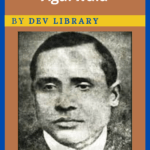
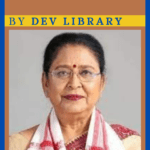
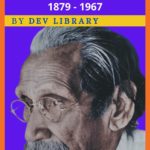
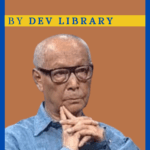
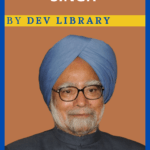


Sir I am very impressed by your writing… I also want to be a blogger like you. your suggestion in this field will definately help in my future endeavour….